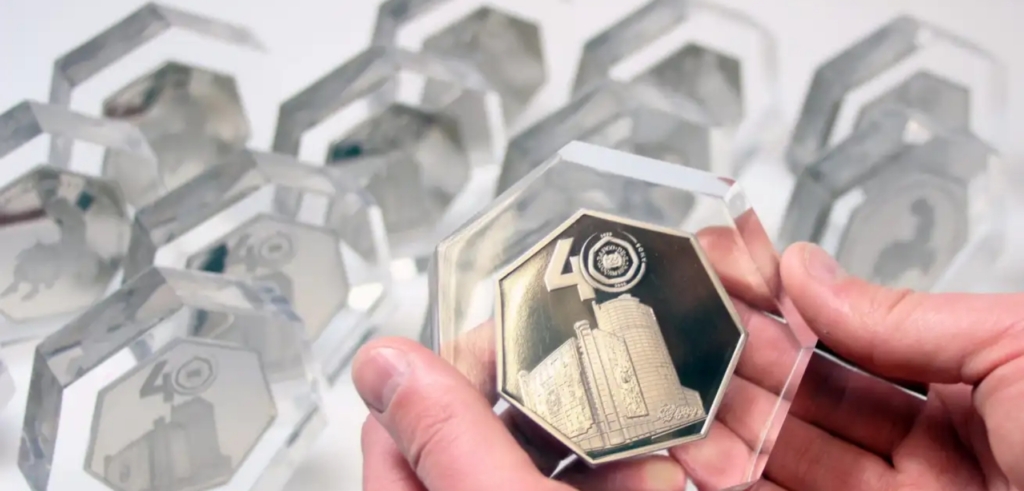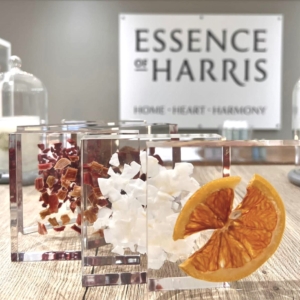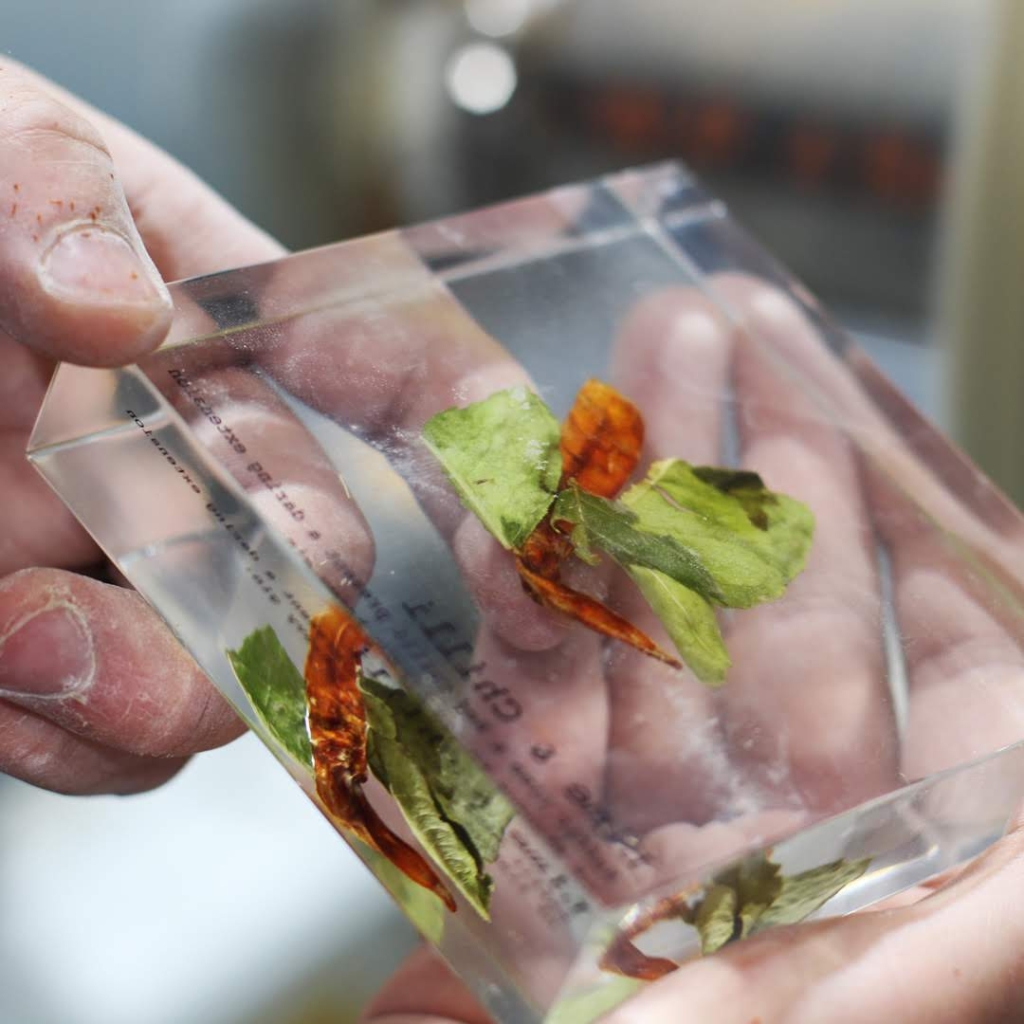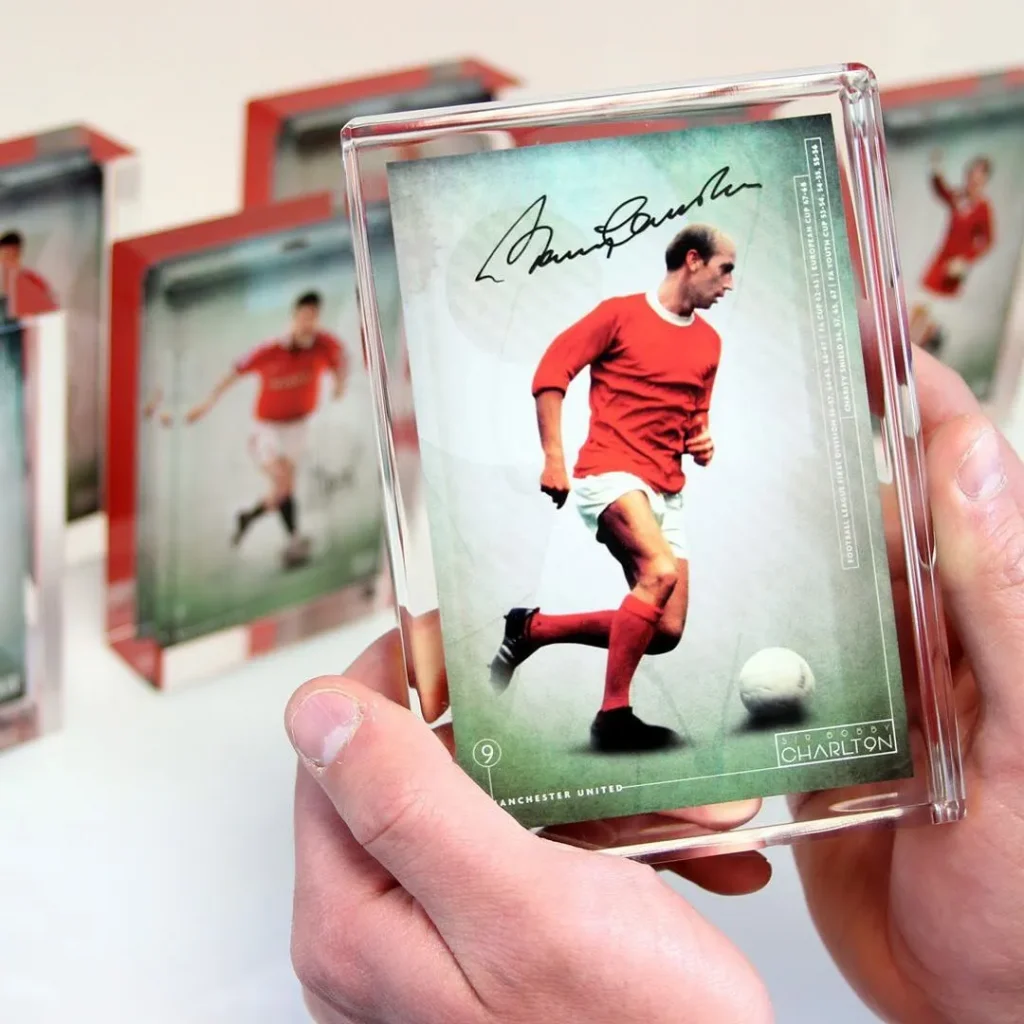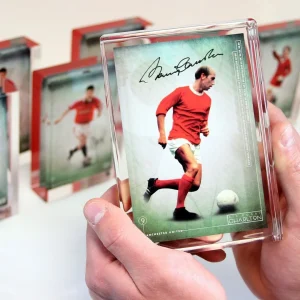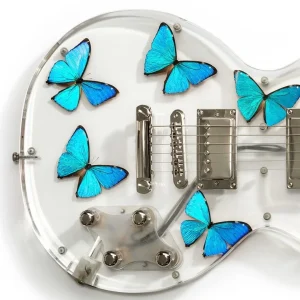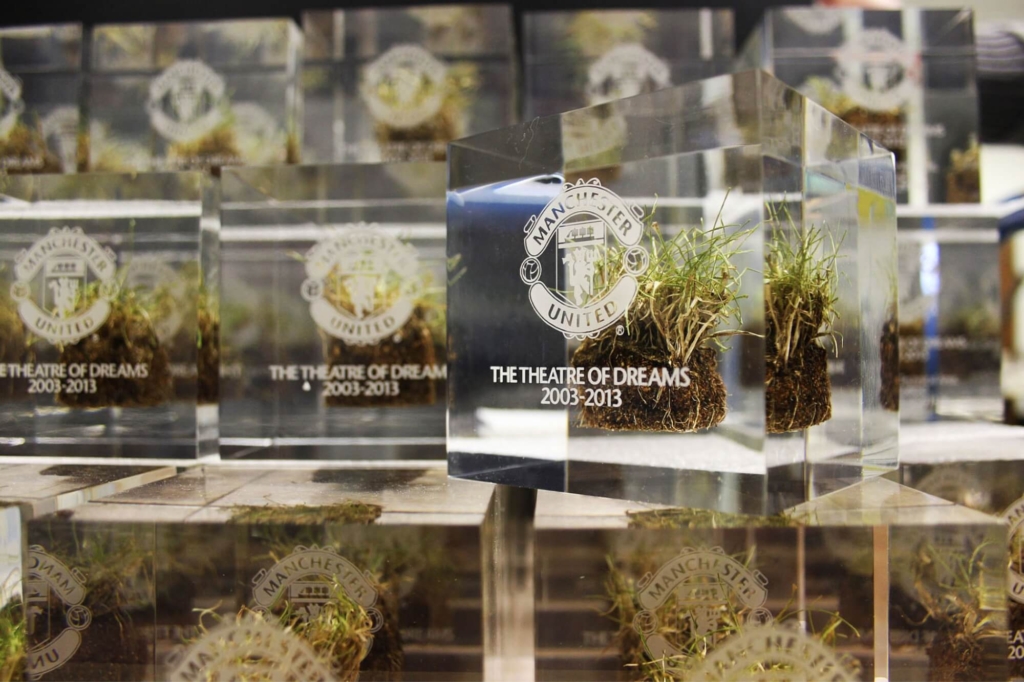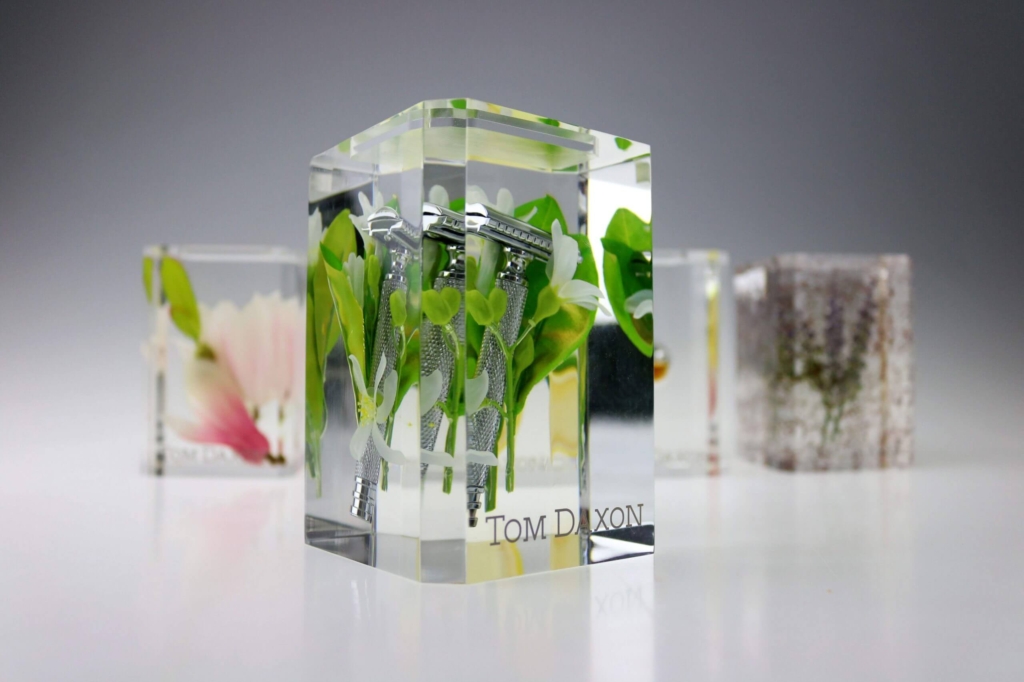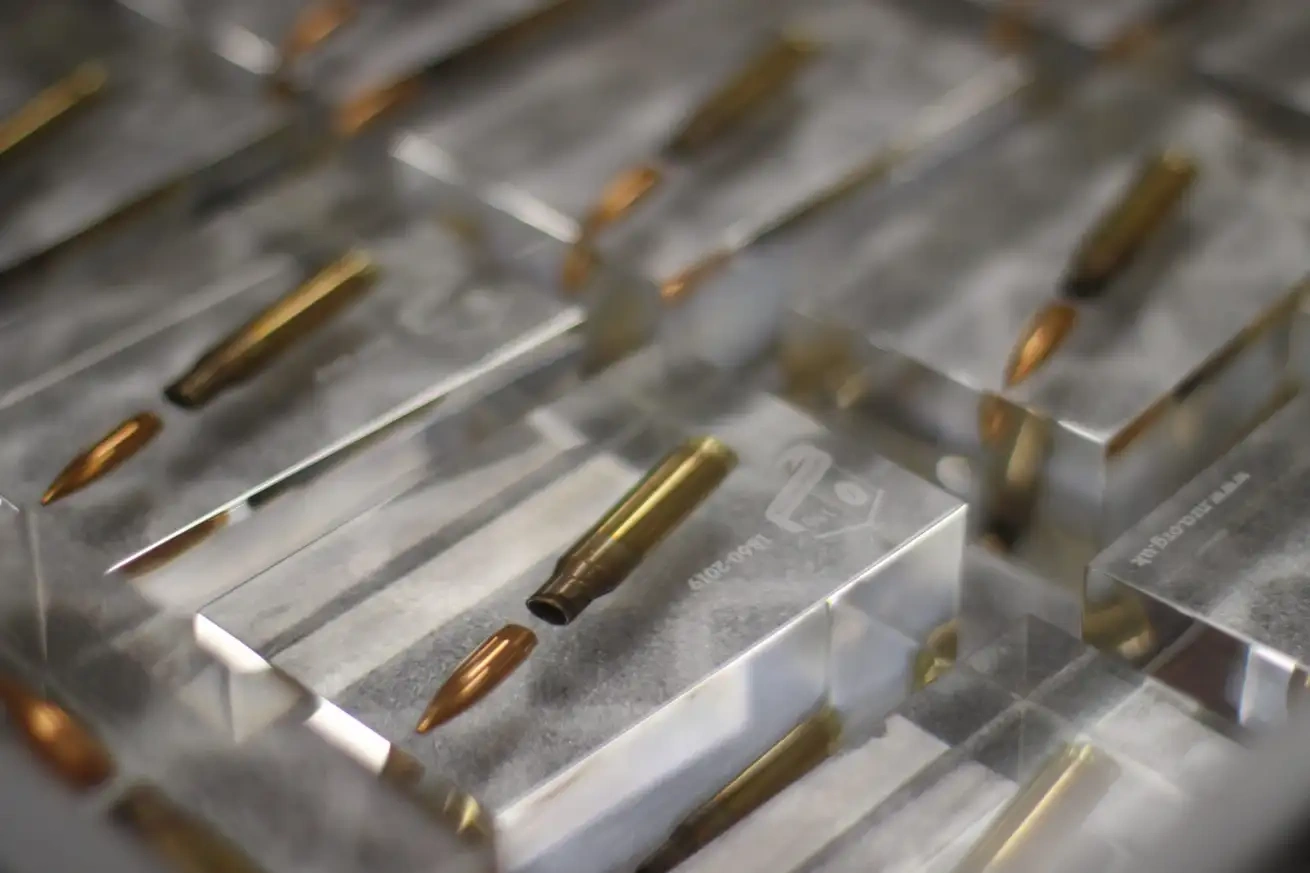
Cast Acrylic
Embedment
Acrylic embedment or encapsulation captures “a moment in time” by permanently encasing meaningful objects inside an acrylic casting to create the perfect memento
Creating unique acrylic embedments for prominence and posterity
Preservation of a meaningful object (such as brand memorabilia) is one of the reasons why our clients seek out acrylic embedment. However, the process is also an alternative way to display items — giving your custom acrylic design primary decorative function, uniquely and excitingly.
Whether you’re awarding something to a long-serving staff member or presenting an item as a marketing gift, acrylic embedments serve a fantastic purpose in creating something memorable.
Each component can be so different and varied in how it will react to the acrylic embedment process.
Objects to be embedded are examined and evaluated for suitability. Once approved, the item is placed within the acrylic mix, poured up and then set within our autoclaves.
Our experience with acrylic embedments includes both standard shapes for corporate awards and more unique, unusual shapes for marketing gifts.
From encapsulating dry flowers in resin to creating a range of other acrylic sculptures, there’s very little we cannot do.
Exploration, development, and uniqueness are fundamental to Midton’s entire brand ethos. We want to explore and expand the opportunities of embedment and to share this journey with our clients. If you’d like to find out more about cast acrylic embedment possibilities for your company, please feel free to get in touch.
Frequently Asked Questions about Acrylic Embedment
What is acrylic embedment?
Acrylic embedment, also known as acrylic encapsulation, is a technique used to preserve objects by embedding them in clear cast acrylic.
The result is an acrylic block that provides a protective and transparent casing that allows the object to be viewed from all angles. This prevents damage from environmental factors such as moisture, light, and dust. Acrylic embedment is often used to showcase valuable or fragile items such as collectibles, memorabilia, and art pieces.
How do you embed objects in acrylic?
Embedding objects in acrylic involves the casting process, in which a mix of polymer and monomer is created to form PMMA (acrylic). The acrylic is then poured to the desired level within a mould, before having the object carefully placed within the mould. The piece is then cured for several hours in an autoclave, before being removed from its mould.
The process can be more complex depending on the size and complexity of the object being embedded, as well as the desired outcome.
What objects don’t embed in acrylic?
While many objects can be embedded in acrylic, there are some objects that may not be suitable for the process. Some examples include
- Highly porous materials: Objects with a highly porous surface, such as untreated wood or some types of stone, may not embed well in acrylic. The acrylic may not adhere properly to the surface, leaving gaps or air pockets that can weaken the embedment and cause internal fracturing and silvering.
- Organic materials: Objects made of organic materials, such as plants or food, may not be suitable for acrylic embedment.
- Sharp or pointed objects: Objects such as knives or needles can puncture the acrylic or damage the surface during the curing process.
- Water sensitive materials: The moisture content in materials such as paper or fabric can cause the material to warm or become discoloured.
It’s important to note that these are just a few examples, and each embedment is a unique process. We embed items at our client’s own risk, and there is never a 100% guarantee that an embedment is safe. Where possible, we suggest a test embedment to avoid damages and failures.
Why would you embed objects in acrylic?
- Preservation and Protection: Embedding an object in acrylic can help preserve it by protecting from damage and decay. The acrylic provides a barrier against dust, moisture and other environmental factors that can cause the object to deteriorate over time. Additionally, acrylic is a durable and impact-resistant material, so the embedment process adds an extra layer of protection against physical damage.
- Display: Embedding an object in acrylic can create a unique and eye-catching display. The transparent nature of the acrylic allows the object to be viewed from all angles, and the embedment process can be customised to create a unique shape & form.
- Memorabilia: Embedding an object in acrylic can create a lasting tribute to a special achievement or event.
Overall, embedding an object in acrylic can add value and interest to your object, while also providing practical benefits such as protection and preservation.
How is acrylic made?
Acrylic, also known as polymethyl methacrylate (PMMA), is a synthetic polymer. The process of making acrylic involves several steps:
1. Production of Methyl Methacrylate (MMA): MMA is the primary raw material used to make acrylic.
2. Polymerisation: MMA is then polymerised to create acrylic polymer. This process involves the use of initiators, which are chemicals that trigger the polymerisation reaction.
3. Casting or Extrusion: The resulting acrylic polymer can be formed into sheets or other shapes using casting or extrusion techniques. In the casting process, liquid acrylic is poured onto a surface and allowed to cure. In the extrusion process, the acrylic polymer is melted and forced through a die to create a specific shape.
4. Finishing: The finished acrylic sheet or shape is then cut, polished, and finished to the desired size and shape.
Acrylic can also be made by other methods, such as bulk or solution polymerisation, but the basic steps involved are similar. The resulting material is strong, lightweight, and transparent, making it useful for a wide variety of applications such as displays, signs, lenses, and even automotive parts.
Acrylic Embedment Case Studies
Need Some Guidance?
If you have an embedment project you’d like to get started or you’re not sure how to proceed, we can help.

